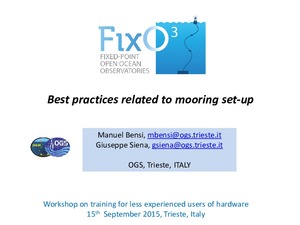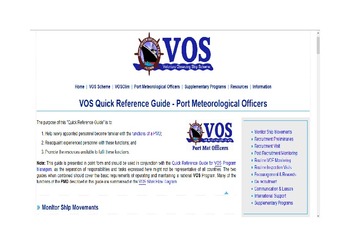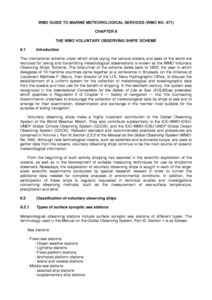Search
Now showing items 11-15 of 15
Ice Chart Colour Code Standard, Version 1.0, 2014.
(World Meteorological OrganizationIntergovernmental Oceanographic Commission of Unesco, Geneva, Switzerland, 2014)
This document describes two separate colour codes for use on ice charts: the first one based on total concentration (CT) intended for use when the stage of development is relatively uniform but concentration is highly ...
Best practices related to mooring set-up. Presented at: Workshop on training for less experienced users of hardware 15th September 2015, Trieste, Italy.
(OGS: Istituto Nazionale di Oceanografia e Geofisica Sperimentale, Trieste, Italy, 2015)
Approaching an oceanographic mooring Principles of “Best Practices” in all phases of the system (predeployment test, maintenance, calibration etc.) should be followed.
They cover the entire infrastructural chain of data ...
VOS Quick Reference Guide - Port Meteorological Officers. [Web document]
(JCOMM Ship Observations Team, 2017)
The purpose of this "Quick Reference Guide" is to:
Help newly appointed personnel become familiar with the functions of a PMO;
Reacquaint experienced personnel with these functions; and
Promote the resources ...
The WMO Voluntary Observing Ships' Scheme.
(WMO-JCOMM, Geneva, Switzerland, 2010)
The international scheme under which ships plying the various oceans and seas of the world are
recruited for taking and transmitting meteorological observations is known as the WMO Voluntary
Observing Ships’ Scheme. ...
Manual on Sea-level Measurements and Interpretation, Volume V: Radar Gauges. [includes Supplement Practical Experiences]
(Intergovernmental Oceanographic Comission of UNESCO, Paris, France, 2016)
Volume 5 which
is devoted specifically to ‘Radar Tide Gauges’. Radar range
finders have been used in industry (where they measure
the levels of liquids in tanks) and hydrology (for measuring
river, lake and reservoir ...
 Repository of community practices in Ocean Research, Applications and Data/Information Management
Repository of community practices in Ocean Research, Applications and Data/Information Management




